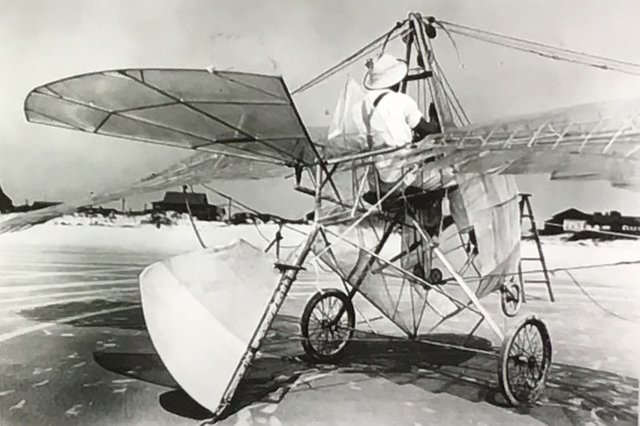Hot Air: An Allegorical Tale
HOT AIR: AN ALLEGORICAL TALE
Once upon a time, people dreamed of being able to fly. This dream lead to two kinds of flying machine being built. One type of ‘flying machine’ was the ornithopter. I put the term flying machine in scare quotes because, when such machines were scaled up to be large enough to transport passengers, they were utterly useless. Knowledgeable critics pointed out fundamental reasons why this kind of flying machine could never work, which really should have spelled the end of ornithopters. Nevertheless there was always those who persisted in believing it could be made to work. Due to the comedic footage of these machines’ pathetic attempts at flying, such believers were labelled ‘Commies’.

(Image from wikimedia commons)
The other kind of flying machine was the hot air balloon. Unlike the ornithopter, which had never worked when scaled up to accommodate human passengers, the hot air balloon did show some limited success in raising people up. Noticing how people were climbing into baskets suspended under balloons and enjoying the freedom of the skies, folks nicknamed balloonists ‘free basketeers’, and the adoption of the ‘free basket’ spread around the world.
The free basketeers saw nothing but a bright future ahead. They pointed out the successes that had been made in lifting people up (undeniable to anyone willing to look at the evidence) and also pointed out the improvements that had been made to balloons, enabling them to go higher, travel further, and lift more people up. Sure, there had been some mistakes along the way and even a disaster or several, but overall the trend was toward ‘better’. The free basketeers confidently asserted that the ability of free baskets to raise people up was limitless and that future generations would surely be flying through space in hot air balloons.

(Image from wikimedia commons)
But a few critics believed there were serious flaws in such assumptions. Although they could certainly see that free baskets had shown limited success in lifting people up, they also highlighted various problems that seemed to be getting more serious. For one thing, there was evidence that, the higher up you go, the colder it got. If such trends continued, they argued, then by the time you got into space it would be so lethally cold you and your passengers would freeze to death. And then there was the problem of breathable air. The higher up you go, the thinner the air became. So people would asphyxiate long before they got to fly around the Andromeda galaxy.
All such objections were dismissed by the free basketeers. “Higher altitudes are correlated with colder conditions? We don’t believe in that global cooling nonsense!”. (The scientific consensus that, yes, it really is unbearably cold in space, did nothing to shake their belief in the boundless expanse of free basketeering). “Oxygen will run out before we reach outer space? Oh, pooh, such talk of reaching ‘peak oxygen’ just fails to see ballooning will find a way!”.
Meanwhile the critics continued to insist that there were fundamental limits to what could be achieved via ballooning and continued to highlight problems that free basketeers dismissed with counter-arguments that seemed wholly convincing to them but very flawed to the critics. And the critics did not just criticise. Some, like Buckminster Fuller, Jacques Fresco and Peter Joseph, reckoned that hot air ballooning had provided the foundations for an entirely different way of doing things. For example, there was that burner that was used to heat up the air inside the balloon. If you aimed it at the ground you got a little push, in accordance with the Newtonian principle ‘for every action there is an equal and opposite reaction’. This gave some the idea that ‘rockets’ with enough thrust to achieve escape velocity could one day be built. They drew up outlines- not complete blueprints, mind you, there was a great deal left to be figured out-showing how such rockets could be built.
Another vague design took as its basis the material that balloons were made out of, which had been getting lighter and stronger. Some fringe thinkers considered the possibility of sails that could use the solar winds produced by the sun to push a craft through space. As with the rockets, there was a lot of details missing in such plans, but those who saw merit in the idea insisted it could work in principle, whereas balloons would never actually transport us to other planets and stars regardless of what the free basketeers told you.
How did the free basketeers respond to these alternatives to balloons? They were dismissed as totally impractical. Very rarely was any valid criticism put forward. Rather, anyone who spoke negatively about free baskets or outlined an alternative was dismissed as a ‘commie’, told (as one might explain to a simpleton) that ‘ornithopters cannot work’. The basketeers had come to believe that ornithopters or hot air balloons were the only kinds of flying machines there could be and they regarded all alternatives through this blinkered perspective. If you did not believe in the free basket, you had to be a commie!
So how does the story end? I do not know. It could be that free basketeers succeed in persuading people that anyone attempting a different approach is a commie and that there are no limits to how high and how far you can go in a hot air balloon, resulting in catastrophe as this particular approach runs up against problems it is fundamentally incapable of dealing with.
Or, it could be that those proposing alternatives to both ornithopters and balloons convince enough people of the potential to be found in their way of doing things, if only we could redirect our efforts to such proposals. In that case, perhaps the free basket would be remembered as a somewhat successful means of providing flight whose adoption was understandable given the knowledge available at the time, and whose eventual replacement was wholly necessary.
So what did we learn from this allegorical tale? We had two attempts at making a flying machine, and you probably guessed that ‘commie’ and ‘free basket’ were puns on ‘communism’ and ‘free markets’. The ‘free basket’ approach to flying demonstrated limited success in ‘raising people up’ (in a literal sense, not the metaphorical sense in which the free market is claimed to be a rising tide that lifts all boats). This leads free basketeers to suppose there is no limit to how high and how far you can go in a balloon, a belief that can only persist by ignoring the mounting problems that such an approach is fundamentally incapable of solving.
But, as it is at root a competitive system based on exploiting scarcity for the purpose of gaining material advantage, and therefore needs scarcity to persist even as it makes some progress in reducing want in limited cases, capitalism ends up creating problems like ecosystems struggling to cope with the garbage we in our throwaway consumerist cultures discard, resource wars, social decay, a banking and financial system that (roughly speaking) creates fictional wealth that boosts the paper profits of corporations while loading increasing debt onto the lower classes, and other increasingly urgent issues that tend to be brushed aside as ‘negative externalities’.
We also imagined how, with some ingenious rethinking and a great deal of applied effort, some of the technologies built to make ballooning work could be used as the basis for a completely different approach. That is what the likes of the Zeitgeist movement are trying to do; come up with credible outlines for an alternative to both capitalism and communism that identifies the fundamental flaws in these older economic models and applying such strategies as systems thinking, strategic abundance, technical efficiency and the Creative Commons to sketch out a different method of running an economy. But just as rockets were dismissed as ornithopters (even though they obviously are not) the ‘resource-based economy’ outlined by Zeitgeist gets dismissed as communism, even though it obviously is not.
So, in summary my story was a cautionary tale about how the limited success free baskets/ free markets had in raising people up somehow led to an irrational belief in this method’s boundless potential, an optimistic outlook that could only be sustained by adopting a ‘head in the sand ‘ approach to mounting problems and directing straw-men attacks at promising alternatives. All in all, a pretty apt portrayal of how debates over the flaws of communism/capitalism and the potential of RBE tend to go.
REFERENCES
“Utopia For Realists” by Rutger Bergman
“The New Human Rights Revolution” by Peter Joseph
“The Virtue Of Selfishness” by Ayn Rand